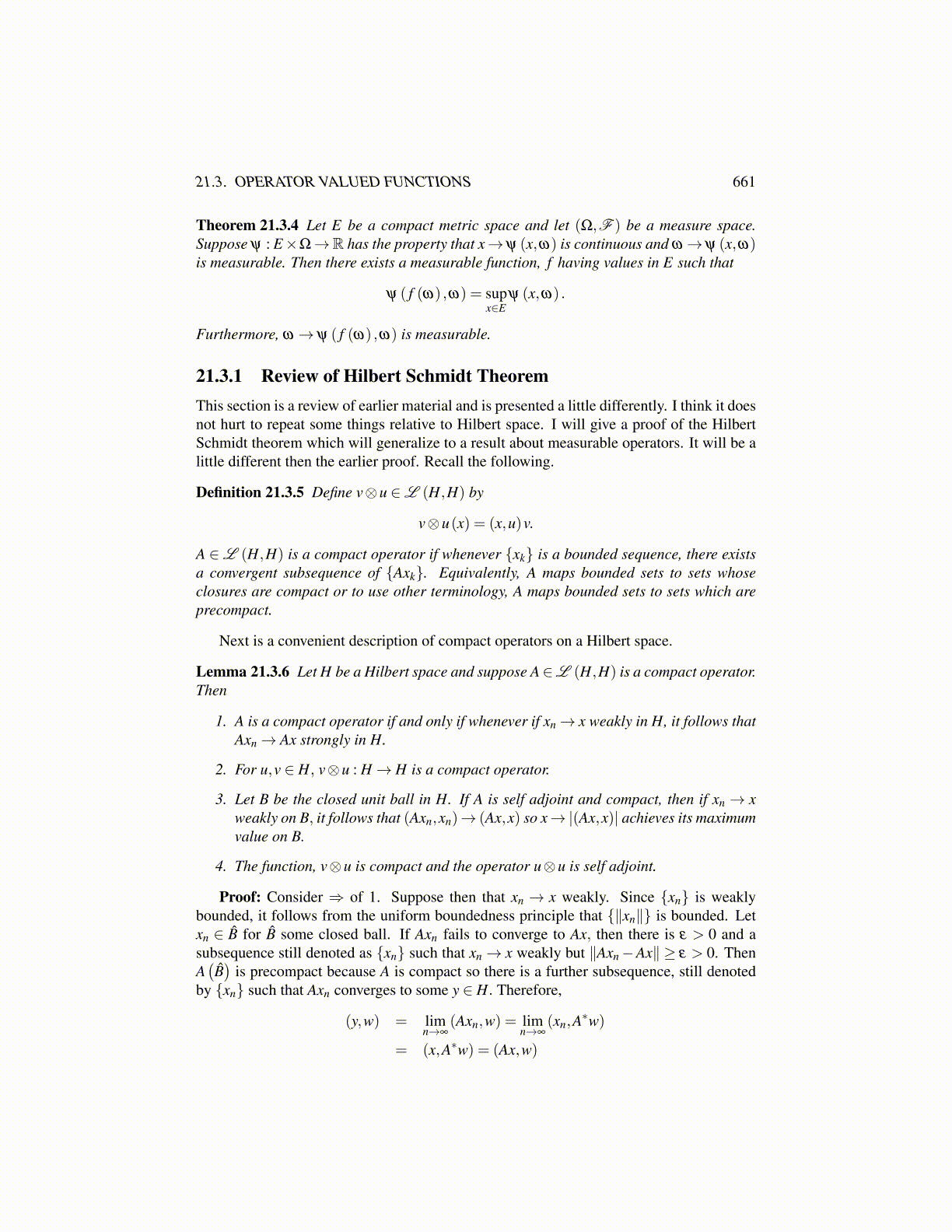
21.3. OPERATOR VALUED FUNCTIONS 661
Theorem 21.3.4 Let E be a compact metric space and let (Ω,F ) be a measure space.Suppose ψ : E×Ω→R has the property that x→ψ (x,ω) is continuous and ω→ψ (x,ω)is measurable. Then there exists a measurable function, f having values in E such that
ψ ( f (ω) ,ω) = supx∈E
ψ (x,ω) .
Furthermore, ω → ψ ( f (ω) ,ω) is measurable.
21.3.1 Review of Hilbert Schmidt TheoremThis section is a review of earlier material and is presented a little differently. I think it doesnot hurt to repeat some things relative to Hilbert space. I will give a proof of the HilbertSchmidt theorem which will generalize to a result about measurable operators. It will be alittle different then the earlier proof. Recall the following.
Definition 21.3.5 Define v⊗u ∈L (H,H) by
v⊗u(x) = (x,u)v.
A ∈L (H,H) is a compact operator if whenever {xk} is a bounded sequence, there existsa convergent subsequence of {Axk}. Equivalently, A maps bounded sets to sets whoseclosures are compact or to use other terminology, A maps bounded sets to sets which areprecompact.
Next is a convenient description of compact operators on a Hilbert space.
Lemma 21.3.6 Let H be a Hilbert space and suppose A∈L (H,H) is a compact operator.Then
1. A is a compact operator if and only if whenever if xn→ x weakly in H, it follows thatAxn→ Ax strongly in H.
2. For u,v ∈ H, v⊗u : H→ H is a compact operator.
3. Let B be the closed unit ball in H. If A is self adjoint and compact, then if xn → xweakly on B, it follows that (Axn,xn)→ (Ax,x) so x→|(Ax,x)| achieves its maximumvalue on B.
4. The function, v⊗u is compact and the operator u⊗u is self adjoint.
Proof: Consider ⇒ of 1. Suppose then that xn → x weakly. Since {xn} is weaklybounded, it follows from the uniform boundedness principle that {∥xn∥} is bounded. Letxn ∈ B̂ for B̂ some closed ball. If Axn fails to converge to Ax, then there is ε > 0 and asubsequence still denoted as {xn} such that xn→ x weakly but ∥Axn−Ax∥ ≥ ε > 0. ThenA(B̂)
is precompact because A is compact so there is a further subsequence, still denotedby {xn} such that Axn converges to some y ∈ H. Therefore,
(y,w) = limn→∞
(Axn,w) = limn→∞
(xn,A∗w)
= (x,A∗w) = (Ax,w)